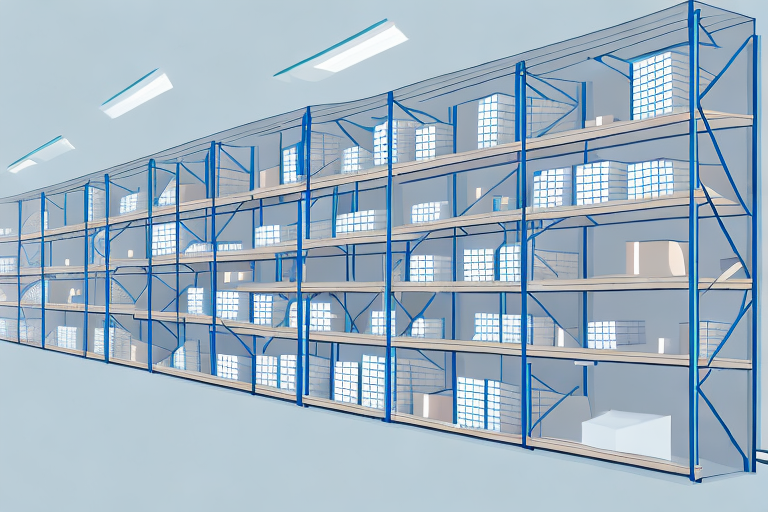Understanding the Importance of Efficient Warehouse Management
In today's competitive market, efficient warehouse management is crucial for ensuring that goods are delivered to customers promptly, accurately, and without damage. Inefficient warehouse practices can lead to increased operational costs, decreased productivity, and lower customer satisfaction levels. According to a McKinsey report, optimized warehouse operations can reduce costs by up to 20% while improving service levels.
Implementing a modern Warehouse Management System (WMS) is essential for achieving operational efficiency. A WMS integrates various technologies to automate and streamline warehouse processes, enhancing accuracy and productivity.
Leveraging Advanced Technologies for Streamlined Operations
Automation and Robotics
The adoption of automated storage and retrieval systems (AS/RS) and robotic systems for order picking and packing can significantly enhance warehouse efficiency. For instance, Forrester Research highlights that automation can reduce labor costs by up to 30% while increasing order fulfillment accuracy.
Real-Time Location Systems (RTLS)
RTLS technology enables real-time tracking of inventory, equipment, and personnel, providing valuable insights for workflow optimization. This technology helps in minimizing errors and enhancing the overall efficiency of warehouse operations.
Warehouse Management Systems (WMS)
A robust WMS is indispensable for managing inventory levels, tracking orders, and optimizing resource allocation. According to a study by Supply Chain Digital, businesses implementing advanced WMS solutions report a 15-25% improvement in inventory accuracy.
Key Performance Metrics for Warehouse Efficiency
Inventory Turnover
Inventory turnover measures how frequently inventory is sold and replaced over a specific period. A higher turnover rate indicates efficient inventory management and reduces holding costs.
Order Cycle Time
Order cycle time tracks the duration from receiving an order to its fulfillment. Reducing this time enhances customer satisfaction and increases the capacity to handle more orders.
Order Fill Rate
The order fill rate assesses the percentage of orders fulfilled completely and accurately on the first attempt. Striving for a high fill rate minimizes returns and boosts customer trust.
Carrying Cost of Inventory
This metric calculates the total cost of holding inventory, including storage, handling, and insurance. Monitoring carrying costs helps identify slow-moving or obsolete inventory, enabling businesses to take corrective actions.
Effective Inventory Management Strategies
RFID Technology
Radio Frequency Identification (RFID) technology enhances inventory visibility and accuracy. According to a report by IBISWorld, RFID can improve inventory tracking accuracy by up to 99.9%.
Kanban Systems
Kanban systems help in controlling inventory levels and ensuring just-in-time (JIT) replenishment. This approach reduces excess inventory and minimizes storage costs.
ABC Analysis
ABC analysis categorizes inventory based on importance and value. By prioritizing high-value items, businesses can optimize inventory levels and focus resources where they are most needed.
Demand Forecasting
Accurate demand forecasting, using historical data and market trends, enables businesses to align inventory levels with expected demand, preventing stockouts and overstocking.
Optimizing Space Utilization in Warehousing
Vertical Space Utilization
Utilizing vertical space through high-rise shelving and mezzanine floors can significantly increase storage capacity without expanding the warehouse footprint.
Layout Optimization
Designing an efficient warehouse layout minimizes travel time and enhances productivity. Implementing strategies like cross-docking can streamline the movement of goods.
Slotting Strategies
Effective slotting involves strategically placing inventory based on demand and picking frequency. This reduces picking time and improves order fulfillment rates.
Just-In-Time (JIT) Inventory
JIT inventory systems reduce the need for excessive storage by aligning inventory replenishment with actual demand. This approach frees up space and lowers holding costs.
Implementing Lean Principles for Operational Excellence
5S Methodology
The 5S methodology (Sort, Set in order, Shine, Standardize, Sustain) promotes workplace organization and efficiency. Implementing 5S can lead to a cleaner, more organized warehouse environment, reducing waste and enhancing productivity.
Continuous Improvement
Encouraging a culture of continuous improvement empowers employees to identify and eliminate inefficiencies. This proactive approach leads to sustained operational excellence.
Enhancing Safety, Security, and Sustainability in Warehousing
Safety Measures
Implementing safety protocols such as proper labeling, employee training on equipment operation, and regular maintenance of machinery reduces the risk of accidents and injuries.
Security Systems
Advanced security measures like CCTV surveillance, access control systems, and robust inventory tracking help prevent theft and ensure product integrity.
Sustainability Practices
Adopting eco-friendly practices, such as waste reduction, recycling programs, and sustainable packaging, not only minimizes environmental impact but also enhances brand reputation. According to SHRM, sustainable practices can lead to cost savings and attract environmentally conscious consumers.
Employee Training and Development for Increased Efficiency
Investing in employee training ensures that staff are knowledgeable about safety practices, equipment operation, and inventory management. Well-trained employees are more productive and less likely to make errors. Additionally, providing opportunities for career advancement fosters loyalty and motivation, contributing to overall warehouse efficiency.
Future-Proofing Warehouse Operations for Long-Term Success
Adopting Emerging Technologies
Staying abreast of advancements in automation, artificial intelligence, and Internet of Things (IoT) technologies ensures that your warehouse operations remain efficient and competitive. Implementing technologies like automated guided vehicles (AGVs) and robotic arms can further streamline processes.
Sustainability and Environmental Responsibility
Future-proofing involves integrating sustainability into warehouse operations. Energy-efficient lighting, renewable energy sources, and sustainable materials reduce environmental impact and align with consumer expectations for responsible business practices.
Flexibility and Adaptability
Building flexibility into warehouse operations allows businesses to adapt to changing market conditions and consumer demands. This includes scalable storage solutions and versatile workforce training to handle varying workloads.
Conclusion
Maximizing efficiency in your main warehouse is a multifaceted endeavor that requires strategic planning, the integration of advanced technologies, and a commitment to continuous improvement. By implementing the strategies and techniques outlined above, businesses can optimize their warehouse operations, reduce costs, increase productivity, enhance safety and security, and ensure long-term success in a rapidly evolving market landscape.




















